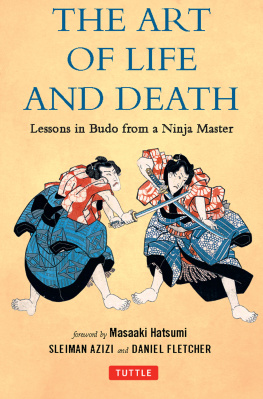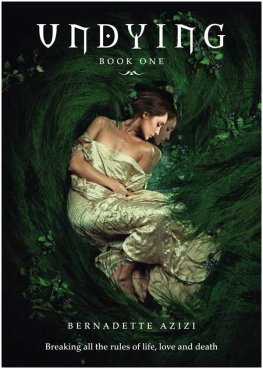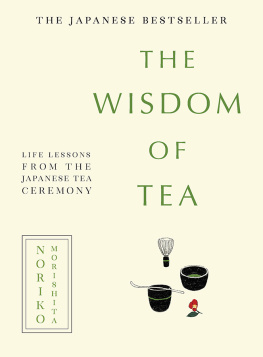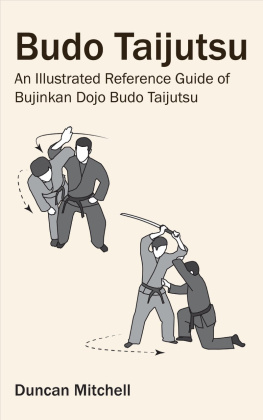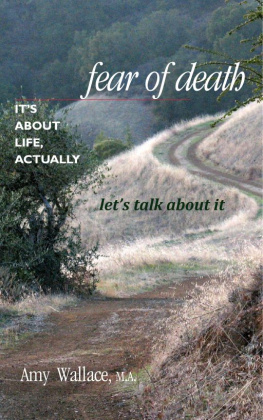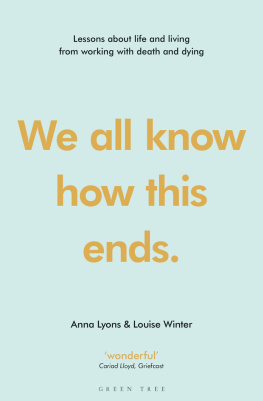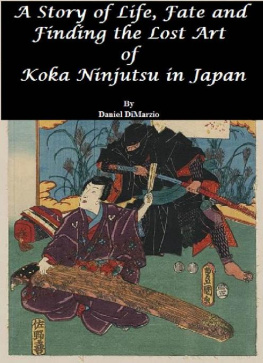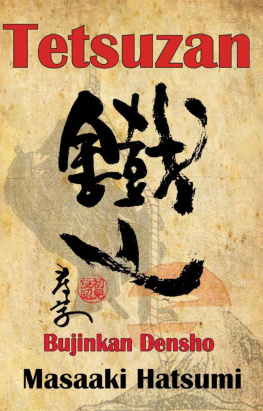There have been many people we have encountered in our studies who have made an impact upon us: Duncan Stewart, Ed Lomax, Darren Horvarth, Mark Lithgow, Mike Loonam, Paul Masse, Doug Wilson, Kenji Mukai,. Yet none of them, despite our respect for them, can compare in influence to Masaaki Hatsumi, or as we usually call him, Sensei.
Many years ago we stumbled upon a martial arts master and it is only now that the wounds from that encounter have begun healing.
Thank you Sensei.
Patience, Providence, Acceptance.

Buyu and the Dojo
"Budo has nothing to do with making friends.
Budo is a solitary thing. People confuse
friendship for budo."
I was sitting in the dojo one day, watching a demonstration. Suddenly, I became curious about what the grandmaster was doing. I turned around only to see him grinning and holding a sword inches from my head. His laughter, for a time, distracted me from the fact that I was dead. In hindsight, I shouldn't have been surprised. This is budo.
"A dojo is a place for confession."
The dojo can be many things to many people. For some, it is a social club. For others, it is an arena for competition. In some arts, the dojo is even seen as a place for business networking. Be that as it may, the grandmaster has said that above all, the dojo is a place for confession.
"A real dojo is wherever you are.
Budo is a solitary pursuit. Though you may find yourself in the midst of seemingly likeminded people, their presence does not constitute a dojo. You must always remind yourself of what it is you are doing in front of your teacher. In a very real sense, the dojo is just you and him.
The deeper significance behind the term dojo" is often lost. The word is generally translated to mean training hall." However, the kanji characters that make up the word dojo literally read, "path-place. Perhaps we are better off understanding the characters as "A place on a path." If the dojo is with us at all times, ought we not to consider then that perhaps we are the dojo?
If you look at budo as a means for coming to terms with your own innate brutality, then the dojo IS a place of healing. The grandmaster's admonishment to treat the dojo as a confessional is perfectly valid and appropriate. Budo (and budo is human) is made up of some nasty things and it is necessary to heal oneself of that nastiness. That means it is your responsibility to seek out the place of healing and it is your responsibility to do as the doctor instructs, not only in the hospital, but everyday, everywhere.
Buyu, our budo brothers and sisters, are people you train with. They are also our teachers. It is not uncommon for us to become very close and to develop strong bonds of trust. It is a wonderful thing. That does not mean that you won't have to kill them one day.
"The dojo is like a hospital. You're here to be fixed."
This is a necessary concept: When you train, it is kill or be killed.
You may be among friends, but not really. You have to think of your training partners and your teachers as killers. If you are enjoying class because you are spending time with friends, then you are missing something. Your training partner is trying to kill you. Your teacher is trying to kill you. It may be training, but if your mind isn't in the right place, then what are you learning? You have to believe that he is trying to kill you. (And if someone has accidentally left a real sword in the rack, he MAY kill you.) This is one of the weird parts or budo: we kill the ones we love (not physically, of course).
When class is over, you can be friends again, but its never really over. There is something else you need to consider: Every persons understanding or budo is his or hers alone. Even if you have trained together every step of the way, every budoka trains alone.
Your understanding or budo, as it comes to you from the Grandmaster, takes precedence over the opinions of friends.
"You have to be able to see things for yourself.
Not just believe what someone else has told you.
Budo is an independent study. You will go through a stage where you may appear aloof and distant, with everyone around you being "wrong." It takes time to work through this phase. It also takes courage to be able to stand alone. To walk into the dojo supported by the opinions of your peers is one thing, but to walk into the dojo supported only by the lessons of your teacher is another. If you can do so, consider it a sign that you have been promoted.
Painting is a faith, and it imposes the duty to
disregard public opinion:" Vincent Van Gogh

